Idea by
Eva Mair, Johannes Paar
Mair-Paar, Office for Architecture
Call for ideas 2020
Architecture and the Rural Public
Architecture and the Rural Public
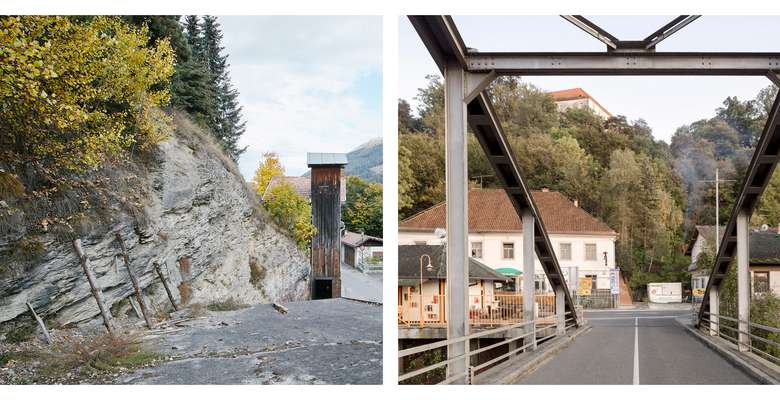
- Site-specific cases
Two small architectural interventions, each transforming an existing situation, are put in a dialogue with each other. In doing so, their specificities are layered with general issues bound to revitalization of rural regions. They are understood and shown as selective spatial adaptations of a bigger rural context, as implementations that help to keep the metabolism of a community alive – as fragments of a rural public, that ask for more.
In the exhibition, the photographic dialogue will be complemented by text fragments of local writers and physical fragments stored from the production process. In addition, communities are invited and selected to discuss potentials for a Rural Public by analyzing their specific situation and rural heritage. “Architecture and the Rural Public” aims to draw attention and to create a public interdisciplinary debate on the care of public spaces and accessibility of heritage in our rural landscapes.
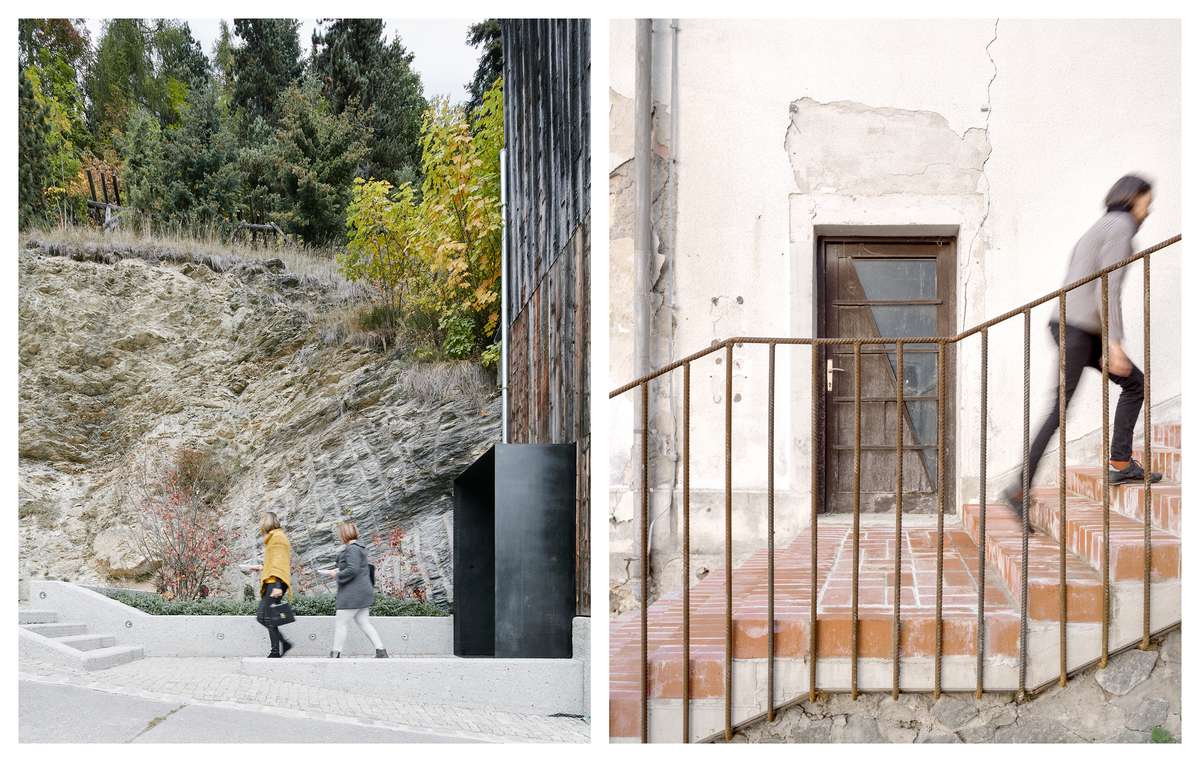
Stilfs/Stelvio (IT) and Mureck/Trate (AT/SI) are two rural communities, each with its respective historical, topographical, demographical and economical specificities. Stilfs/Stelvio arose from a community of mineworkers. Mureck/Trate is located at the river Mur – today the border between Austria and Slovenia, separating the city center from the castle Obermureck/Cmurek. The shown architectural interventions are both attempts to re-establish accessibility of a specific rural heritage accessible.

In Stilfs/Stelvio, an exhibition space is set as independent shell into an existing building. It penetrates the existing facade on three points and becomes visible and accessible from the outside. On the inside, the black shell opens towards a natural cave.
In Mureck/Trate, an old pathway from the bridge up to the castle (and back) is reactivated and partially built anew. It leads through a communal garden with a new baking oven, bench and working block all out of bricks.
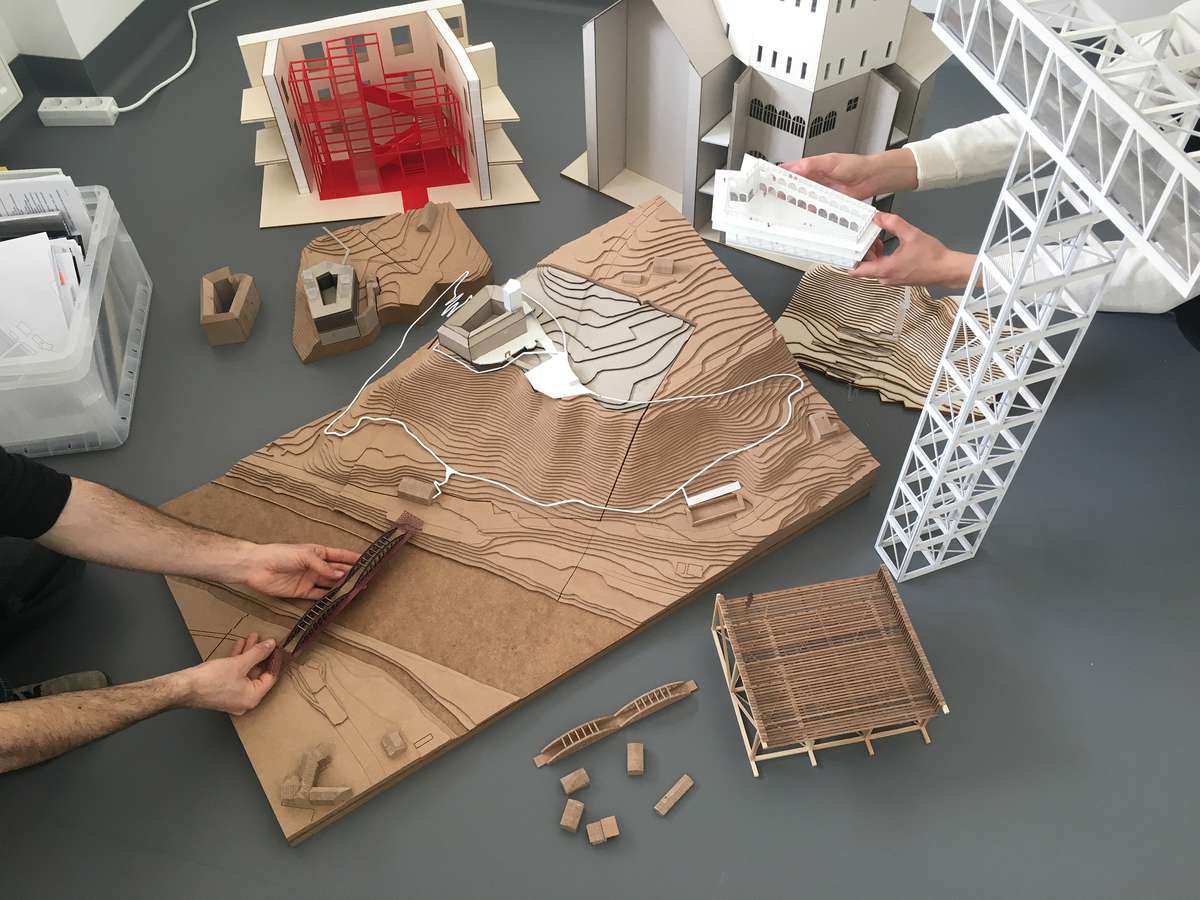
In both communities, local activists who recognized hidden values acted as initiators of the transformations. In Stilfs/Stelvio, the municipality successively commissioned a specific first implementation. In Mureck/Trate, architectural visions, workshops with the stakeholders and the consecutive architectural interventions were implemented as a university research and design-build project, carried out at the Research Unit Architectural Typology and Design, TU Wien, Austria.
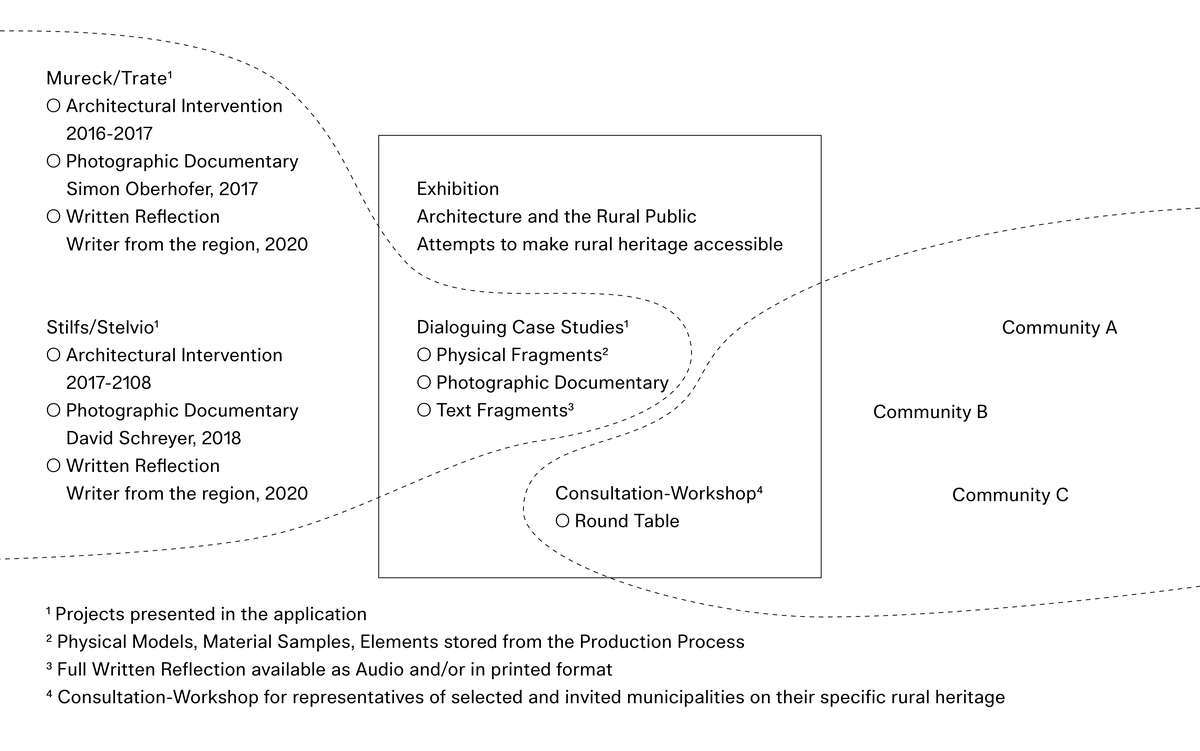
The exhibition shows the case studies through different artefacts dialoguing with each other: Physical fragments stored from the productions process; Photographs by David Schreyer and Simon Oberhofer; Texts by writers from the region, that are able to caption non-visual aspects of each project, region and examination. Further representatives of selected interested municipalities are invited to discuss the potentials for a Rural Public in their community by analyzing their specific heritage.

The exhibition is a collection of different views on the two bottom-up transformations. By creating a dialogue between the two case studies, their specificities are layered with general issues bound to revitalization of rural regions. They are understood and shown as selective spatial adaptations of a bigger context, as implementations that help to keep the metabolism of a community alive, as fragments of a "Rural Public", that ask for more.
Architecture and the Rural Public
Architecture and the Rural Public

- Site-specific cases
Two small architectural interventions, each transforming an existing situation, are put in a dialogue with each other. In doing so, their specificities are layered with general issues bound to revitalization of rural regions. They are understood and shown as selective spatial adaptations of a bigger rural context, as implementations that help to keep the metabolism of a community alive – as fragments of a rural public, that ask for more.
In the exhibition, the photographic dialogue will be complemented by text fragments of local writers and physical fragments stored from the production process. In addition, communities are invited and selected to discuss potentials for a Rural Public by analyzing their specific situation and rural heritage. “Architecture and the Rural Public” aims to draw attention and to create a public interdisciplinary debate on the care of public spaces and accessibility of heritage in our rural landscapes.

Stilfs/Stelvio (IT) and Mureck/Trate (AT/SI) are two rural communities, each with its respective historical, topographical, demographical and economical specificities. Stilfs/Stelvio arose from a community of mineworkers. Mureck/Trate is located at the river Mur – today the border between Austria and Slovenia, separating the city center from the castle Obermureck/Cmurek. The shown architectural interventions are both attempts to re-establish accessibility of a specific rural heritage accessible.
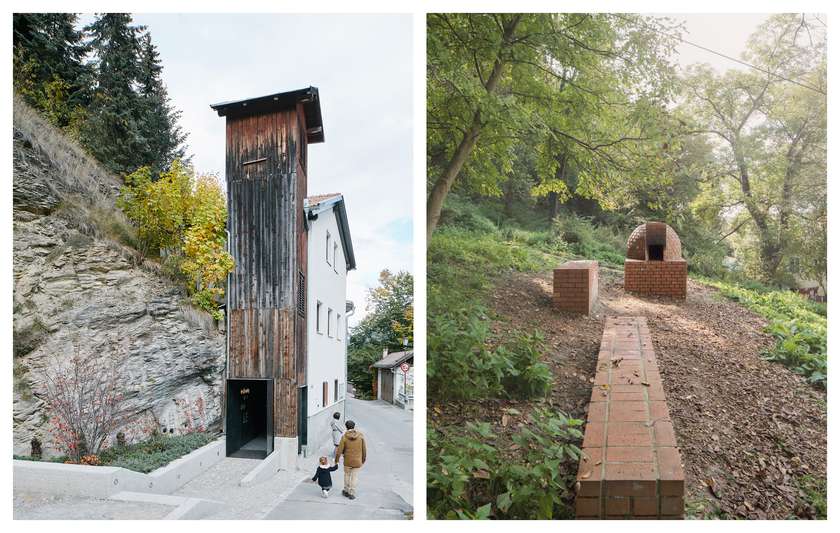
In Stilfs/Stelvio, an exhibition space is set as independent shell into an existing building. It penetrates the existing facade on three points and becomes visible and accessible from the outside. On the inside, the black shell opens towards a natural cave.
In Mureck/Trate, an old pathway from the bridge up to the castle (and back) is reactivated and partially built anew. It leads through a communal garden with a new baking oven, bench and working block all out of bricks.
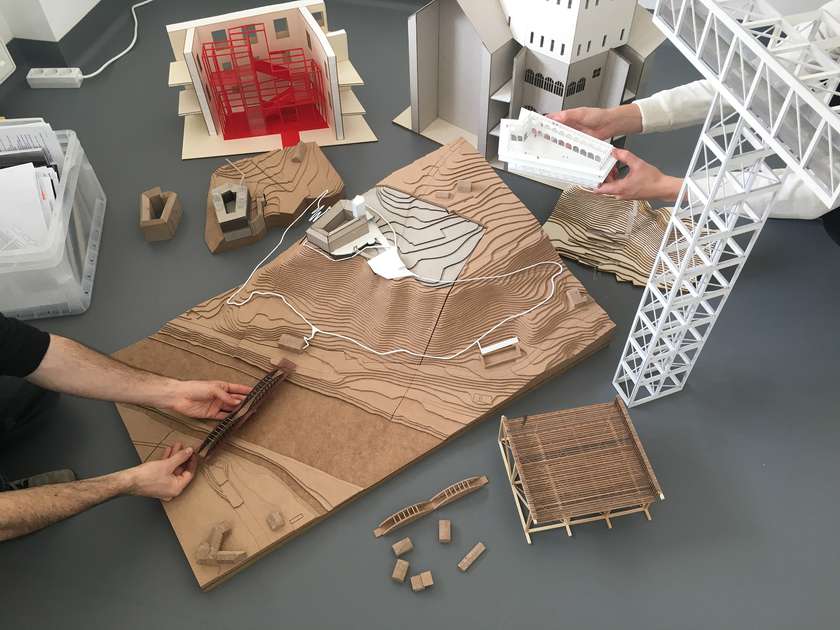
In both communities, local activists who recognized hidden values acted as initiators of the transformations. In Stilfs/Stelvio, the municipality successively commissioned a specific first implementation. In Mureck/Trate, architectural visions, workshops with the stakeholders and the consecutive architectural interventions were implemented as a university research and design-build project, carried out at the Research Unit Architectural Typology and Design, TU Wien, Austria.
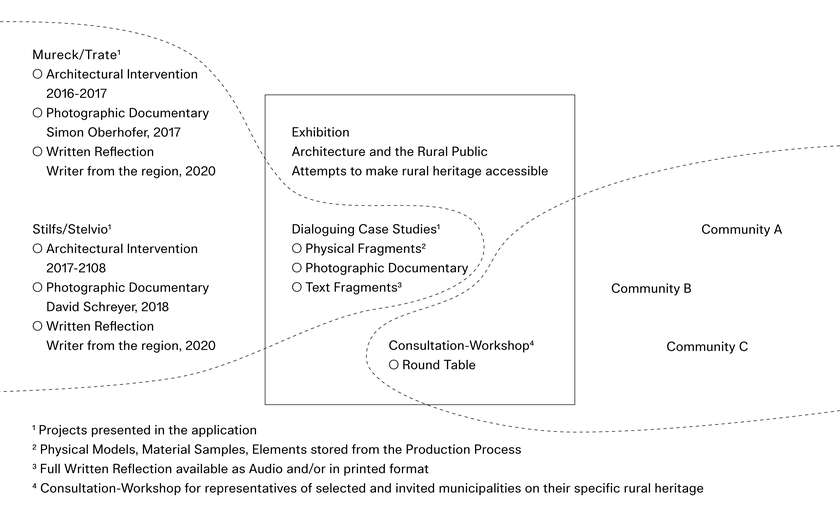
The exhibition shows the case studies through different artefacts dialoguing with each other: Physical fragments stored from the productions process; Photographs by David Schreyer and Simon Oberhofer; Texts by writers from the region, that are able to caption non-visual aspects of each project, region and examination. Further representatives of selected interested municipalities are invited to discuss the potentials for a Rural Public in their community by analyzing their specific heritage.

The exhibition is a collection of different views on the two bottom-up transformations. By creating a dialogue between the two case studies, their specificities are layered with general issues bound to revitalization of rural regions. They are understood and shown as selective spatial adaptations of a bigger context, as implementations that help to keep the metabolism of a community alive, as fragments of a "Rural Public", that ask for more.